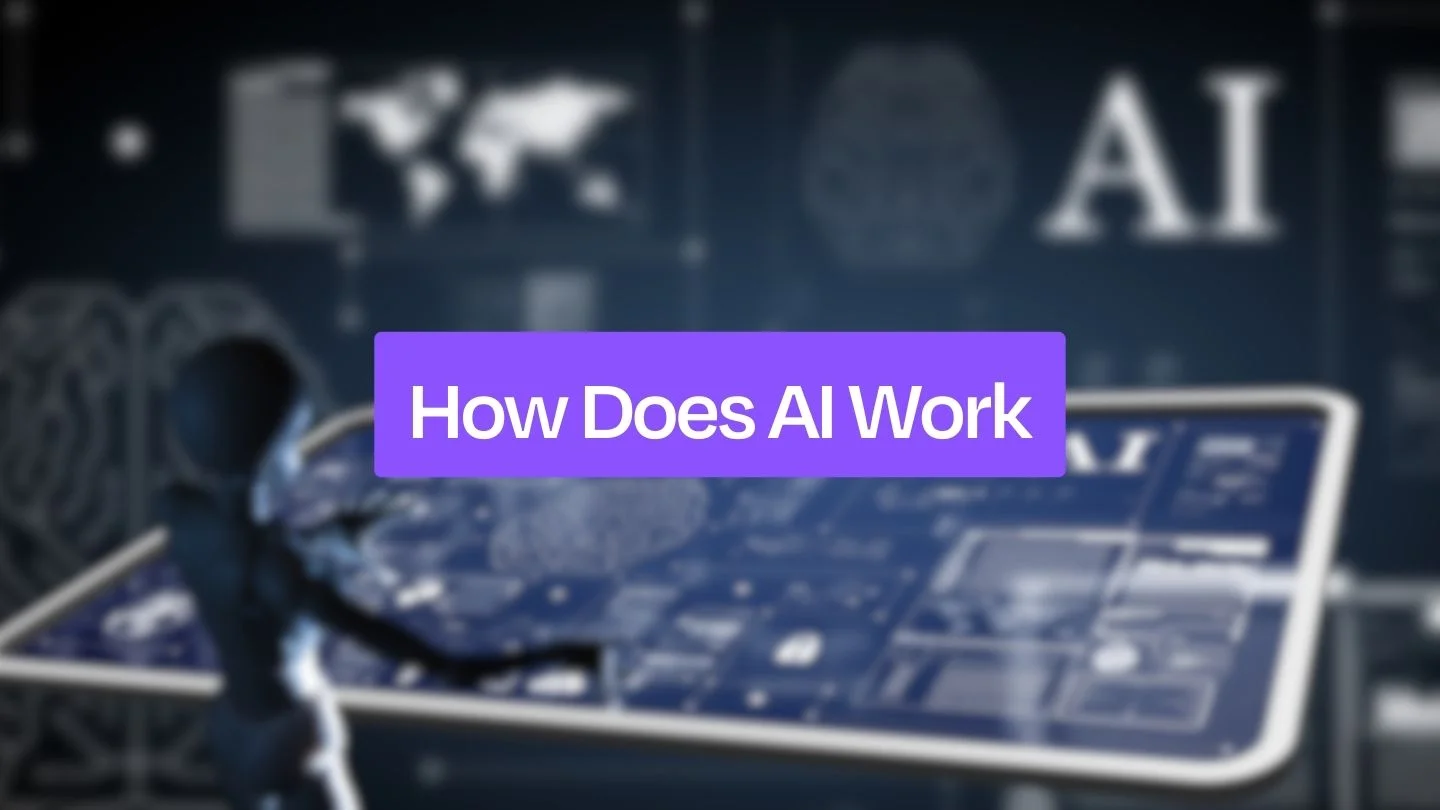Introduction
Artificial Intelligence, often abbreviated as AI, is a term that evokes a mix of fascination and curiosity. But what exactly is AI? At its core, AI refers to the simulation of human intelligence in machines that are programmed to think and learn like humans. From its humble beginnings in the mid-20th century to the sophisticated technologies we see today, AI has evolved dramatically and is now an integral part of our daily lives.
AI’s journey began with theoretical ideas and early experiments. The term “Artificial Intelligence” was coined in 1956 during a conference at Dartmouth College, but the idea of creating machines that can think dates back even further. Over the decades, advancements in technology have made AI more accessible and impactful, influencing various sectors including healthcare, finance, transportation, and entertainment.
Understanding AI
To understand AI, it’s essential to recognize its different types and the concepts that underpin its functionality.
Different Types of AI
- Narrow AI: Also known as Weak AI, Narrow AI is designed to perform specific tasks. Examples include virtual assistants like Siri and Alexa, or recommendation algorithms used by Netflix and Amazon. These systems are excellent at their designated tasks but cannot operate beyond their programming.
- General AI: General AI, or Strong AI, refers to systems that possess the ability to perform any intellectual task that a human can. These systems would have the flexibility and capacity to learn and apply knowledge across various domains, much like a human.
- Superintelligent AI: This is a hypothetical form of AI that surpasses human intelligence across all fields, including creativity, problem-solving, and social interactions. While this concept remains largely theoretical, it is a topic of considerable debate and speculation.
Key Concepts in AI
- Machine Learning (ML): A subset of AI, ML involves training algorithms to learn from data and make predictions or decisions without being explicitly programmed for each task. The system improves over time as it is exposed to more data.
- Deep Learning: A further subset of ML, deep learning uses neural networks with many layers (hence “deep”) to analyze complex patterns in large datasets. This approach has been particularly successful in image and speech recognition.
- Neural Networks: Inspired by the human brain, neural networks consist of interconnected nodes (or neurons) that process information in layers. These networks are fundamental to many AI systems, enabling them to recognize patterns and make decisions.
How AI Works
The process of creating and implementing AI involves several critical steps:
- Data Collection and Preprocessing: The foundation of any AI system is data. Large volumes of relevant data are collected and then cleaned to ensure quality and consistency. This step is crucial because the accuracy of AI predictions depends heavily on the quality of the data used.
- Algorithm Selection and Training: Once the data is ready, appropriate algorithms are selected based on the task at hand. The system is then trained using this data, which involves feeding the data into the algorithm and adjusting parameters to minimize errors and improve accuracy.
- Model Evaluation and Tuning: After training, the model is tested with new data to evaluate its performance. This step involves fine-tuning the model to ensure it generalizes well to unseen data and does not overfit to the training data.
- Deployment and Monitoring: Once a satisfactory model is developed, it is deployed into the real world where it can start making predictions or automating tasks. Continuous monitoring is necessary to maintain performance and address any issues that arise over time.
Applications of AI
AI’s versatility means it can be applied to a wide range of industries, enhancing efficiency and innovation.
- Healthcare: AI is revolutionizing healthcare through applications like diagnostic imaging, personalized treatment plans, and predictive analytics to foresee patient outcomes.
- Finance: In finance, AI is used for fraud detection, algorithmic trading, risk management, and personalized financial advice, making financial systems more secure and efficient.
- Transportation: Self-driving cars, traffic management systems, and predictive maintenance for vehicles are just a few examples of how AI is transforming transportation.
- Education: AI-driven tools can provide personalized learning experiences, automate administrative tasks, and even assist in grading, thereby improving the overall educational landscape.
- Entertainment: AI enhances user experiences through content recommendations, generates realistic animations in video games, and even creates music and art, showcasing its creative potential.
Benefits of AI
AI offers numerous benefits that can transform various aspects of life and work:
- Efficiency and Productivity: AI can automate repetitive tasks, allowing humans to focus on more complex and creative endeavours. This leads to significant gains in productivity.
- Enhanced Decision-Making: By analyzing vast amounts of data, AI can provide insights and predictions that help in making informed decisions, thereby improving outcomes in business, healthcare, and other fields.
- Personalization: AI can tailor experiences to individual preferences, from personalized shopping recommendations to custom learning plans, enhancing user satisfaction and engagement.
- Innovation and Creativity: AI can assist in research and development by identifying patterns and generating ideas that humans might not have considered, driving innovation across industries.
Challenges and Risks of AI
Despite its advantages, AI also presents several challenges and risks:
- Ethical Concerns: The development and deployment of AI raise ethical questions about bias, fairness, and accountability. Ensuring that AI systems are transparent and equitable is crucial.
- Job Displacement: As AI automates tasks, there is a risk of job displacement for certain roles. While AI creates new job opportunities, the transition can be challenging for affected workers.
- Privacy Issues: AI systems often rely on large amounts of data, raising concerns about privacy and data security. Protecting user data is essential to maintaining trust.
- Security Threats: AI can be exploited for malicious purposes, such as cyber-attacks or misinformation campaigns. Robust security measures are necessary to mitigate these risks.
Future of AI
The future of AI holds immense potential and promises exciting advancements:
- Emerging Trends in AI: Innovations such as explainable AI, edge computing, and AI-driven biotechnology are set to shape the future, making AI more transparent, efficient, and integrated into everyday life.
- Potential Societal Impacts: AI could significantly impact society by enhancing healthcare outcomes, driving economic growth, and addressing global challenges like climate change. However, it is vital to manage these changes responsibly.
- Preparing for an AI-Driven World: As AI continues to evolve, it is essential to invest in education and training to equip individuals with the skills needed to thrive in an AI-driven world. Policymakers and businesses must collaborate to create frameworks that ensure the responsible and ethical use of AI.
Conclusion
AI is a transformative technology with the potential to revolutionize various aspects of our lives. By understanding its workings, benefits, and challenges, we can harness its power responsibly and effectively. As we look to the future, it is crucial to continue exploring AI’s potential while addressing the ethical and societal implications it brings.
FAQs
- What is the difference between AI and machine learning?
AI is the broader concept of machines being able to carry out tasks in a way that we would consider “smart,” while machine learning is a subset of AI that focuses on the idea of giving machines access to data and letting them learn for themselves. - How is AI used in everyday life?
AI is used in various ways, such as virtual assistants (Siri, Alexa), recommendation systems (Netflix, Amazon), fraud detection (banks), and personalized advertising. - Can AI surpass human intelligence?
While current AI systems are designed to perform specific tasks better than humans, achieving general or superintelligent AI that surpasses human intelligence in all areas remains a theoretical possibility and a topic of ongoing research and debate. - What are the ethical considerations in AI development?
Ethical considerations include ensuring fairness, avoiding bias, protecting privacy, ensuring transparency, and preventing misuse of AI technologies. - How can one start learning about AI?
To start learning about AI, one can explore online courses, read introductory books on AI and machine learning, participate in coding exercises on platforms like Kaggle, and stay updated with the latest research and developments in the field.


